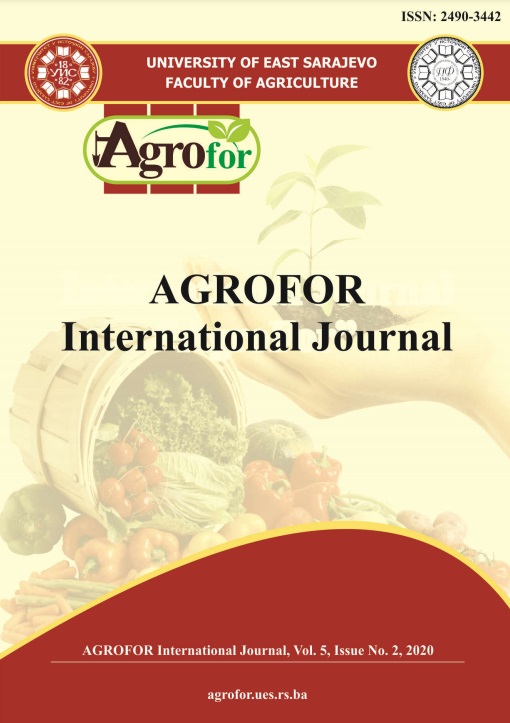STUDY OF MELLIFEROUS PLANTS VISITED BY THE WORKER HONEYBEE, APIS MELLIFERA INTERMISSA IN BOUMERDES, ALGERIA
DOI:
https://doi.org/10.7251/AGRENG2002144BAbstract
This work allows to establish a list of melliferous plants visited by the worker bee,
Apis mellifera intermissa in Boumerdes through melissopalynological analysis.
Eight samples of honey were collected in summer from different regions of
Boumerdes province in Algeria: Mizrana (H1), Tizéruine (H2), Tagdempt (H3),
Sherraba (H4), Baghlia (H5), Boudouaou (H6), Sidi Daoud (H7) and Si Mustapha
(H8). For the analysis, we adopted the classical method of Louveaux et al., (1970).
The results obtained showed that the melissopalynological analysis indicated the
pollen grains of Eucalyptus were numerous as more than 45% of the pollen in six
(6) of the eight samples of Boumerdes (H1, H2, H3, H4, H7 and H8). The pollen of
Hedysarum coronarium was dominant in the sample H5 (67.60%). In seven
samples honey recognized multifloral by beekeepers, Eucalyptus and Citrus taxa
were respectively super represented and underrepresented in the honey H7
(87.46%) and H6 (19.80%). Thus, the number of taxa listed in the honeys studied
varies from 14 to 19. The total number of pollen grains counted for the 8 samples
varied from 646 to 3580.

